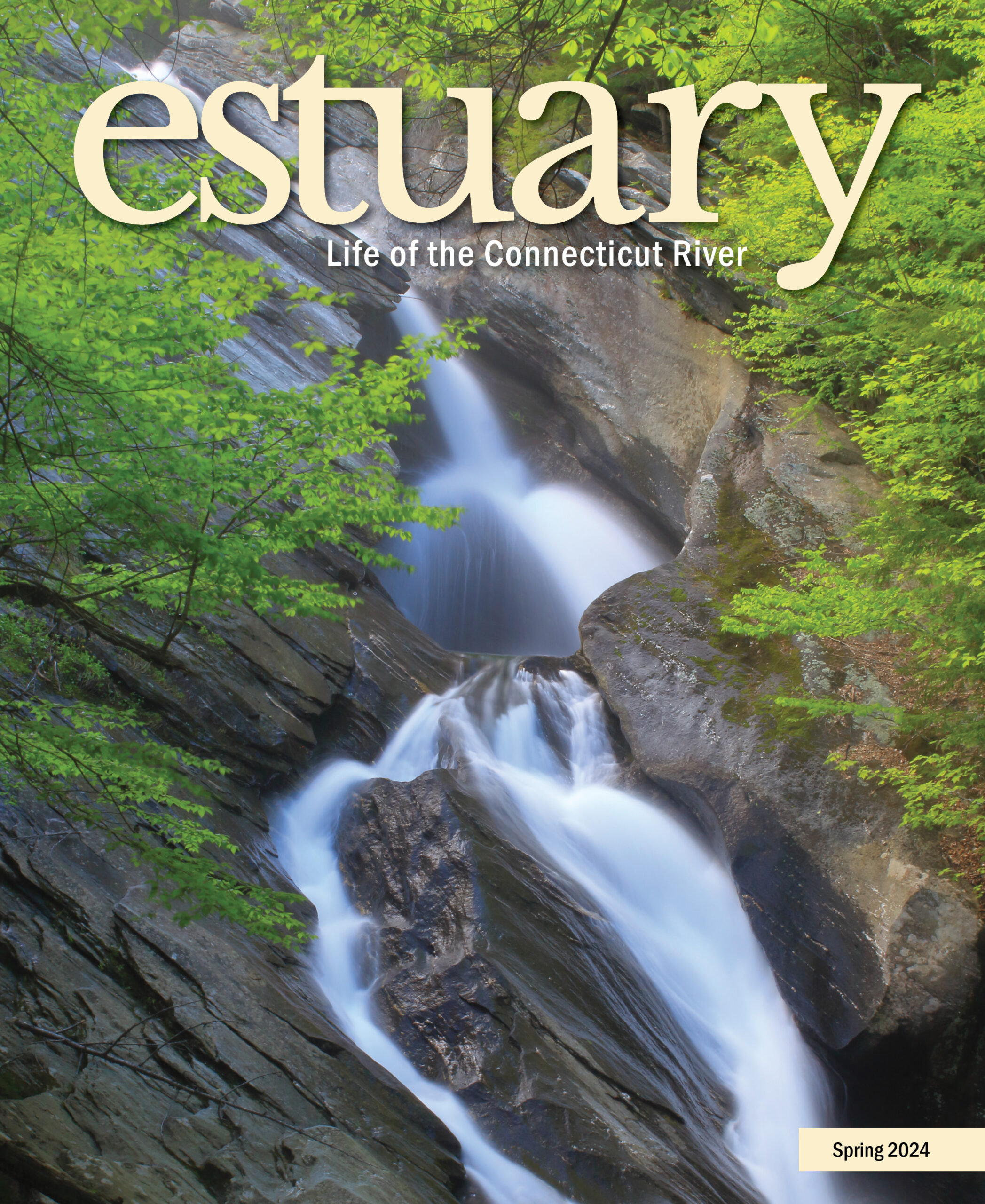 This article appears in the Spring 2024 issue
This article appears in the Spring 2024 issue

Celebrating Trees
And All They Do in the Watershed
Story and Photo by Markelle Smith and Kristen Sykes
As spring arrives, we’re celebrating trees and their important—and complex—role in preserving the Connecticut River Watershed. Trees enhance the visual and physical experience of our surroundings, of course. National and state forests offer recreational and restorative opportunities to both nearby residents and visitors from afar, as the recent Covid-19 pandemic revealed. In urban and suburban communities, trees help keep home cooling costs down and provide much needed shade on hot summer days. And we definitely can’t rule out forest bathing—the latest trend highlighting the spiritual and emotional benefits that arise from being surrounded by trees.
From a functional perspective, many of us are aware of how trees improve air and water pollution—trees quite literally absorb gaseous air pollutants and intercept airborne particulate matter, improving our overall air quality and human health. Similarly, trees positively affect water quality by acting as filters and sponges that slow flow and absorb waterborne pollutants.
Trees are particularly important in the floodplains of rivers where they provide protection from extreme flood events such as those experienced during the summer of 2023 up and down the watershed. But floodplain forests are extremely rare, comprising only 0.11 percent of the watershed land area! In the Northeast, a lot of land adjacent to rivers has been cleared of trees for residential development, hay cultivation, and cornfields.

Floodplain forest at the Oxbow along the Connecticut River in Northampton, MA, 2013.
Recognizing this threat, several floodplain forest restoration and protection projects have been undertaken by partners in the Connecticut River watershed. Some floodplain forest project sites completed in the last decade include along the Connecticut River in Longmeadow, Massachusetts, and along tributaries, including the White River in Bethel, Vermont, and the Ammonoosuc River in Lisbon, New Hampshire.
Trees are also important as carbon storage tanks. They not only sequester carbon by removing carbon dioxide from the air, they also store it as they grow. Did you know trees store more than half of their carbon below ground? Forests are highly effective carbon capture systems, and their protection and management is often referred to as a “nature-based solution” in the context of the current climate crisis. The careful planting, stewardship, protection, and management of our trees and forest ecosystems helps slow the impact of climate change.
Given the numerous benefits of trees, it’s encouraging that many of the current funding opportunities available for conservation projects nationwide through the Inflation Reduction Act and other federal funding sources can be used to enhance and restore our forests. In early 2023, the US Forest Service announced that they would be awarding $1 billion nationwide to community-based organizations, tribes, state and local agencies, public colleges and universities, and nonprofits working to provide equitable access to trees and nature and the benefits they provide to urban communities.
Last October, the Forest Service announced it had awarded $13 million to urban centers in the Connecticut River watershed. The City of Hartford, Connecticut, received $6 million; the City of Springfield, Massachusetts, received $6 million; the City of Holyoke, Massachusetts, received $1 million; and Lebanon, New Hampshire, received $244,275. As a requirement of the grant, these funds must be spent in partnership with community-based organizations to increase the urban tree canopy and add employment opportunities in urban forestry. It will be exciting to learn how watershed partners engage with these municipalities.
It’s an exciting time to be a tree—by contributing to pollution, temperature, and flood remediation; aesthetics; carbon storage; and mental health, the value of trees has never been clearer. Many current US Forest Service grant opportunities will provide more dollars than they have historically for forest projects in rural, suburban, and urban communities across our watershed.
You might be wondering, “How can I improve our neighborhood tree canopy?” Beyond what you can do in your own yard (or, if you don’t have one), here are some suggestions: volunteer at your neighborhood park, forest, or local land trust in a tree planting effort or invasive plant removal project; share the benefits of trees with your friends and family; and by all means, hug your favorite tree!
Markelle Smith is Director of the Friends of Silvio O. Conte National Fish and Wildlife Refuge. Kristen Sykes is Northeast Regional Director of the National Parks Conservation Association.
